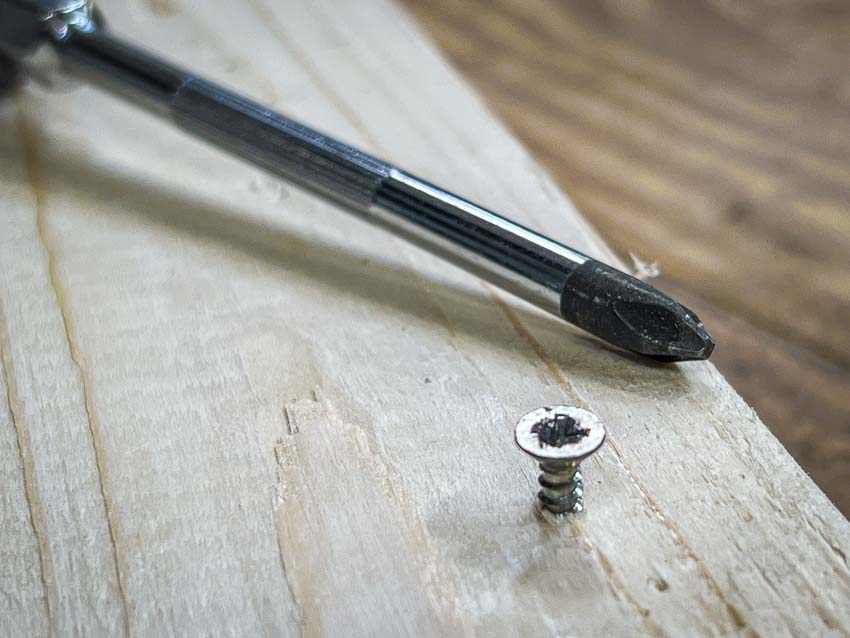Stripped screws can happen to anyone, and they can stop your project in its tracks. Screws get stripped for various reasons. With a little know-how and a few household tools, you can get your project back on track in no time. Learn how to remove a stripped screw with professional tips and tricks, and find out the best tools for tackling this common DIY problem.
What is a Stripped Screw?
A stripped screw happens when the notches in the head of a screw get mangled or worn away. This makes it impossible for your screwdriver to get a grip to turn the screw. It can happen with the best screws, and it can happen to anyone, from professional handymen to experienced DIYers.
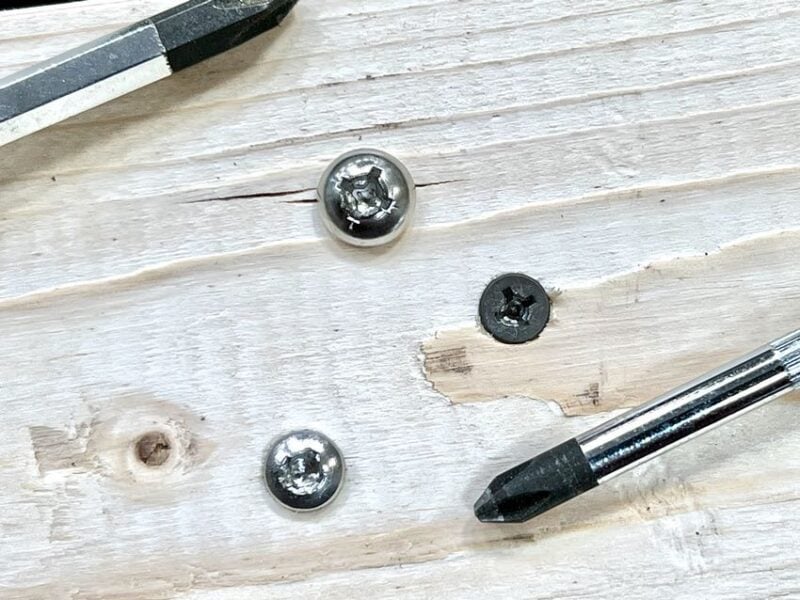
Defining the Problem and Identifying Common Causes
You can strip any kind of screw, but it usually happens with old screws. This goes double for rusted screws or those that have been turned too many times. It also happens frequently with screws made of cheap metal or screws in hard-to-reach areas. Also, if you don’t seat your screwdriver properly in the slotted or Phillips notch, it can strip out a screw pretty quickly.
Recognizing and Avoiding Stripped Screws in DIY Projects
Understanding the common causes of stripped screws can help you avoid them in your DIY projects. Watch out for the following things so you can recognize the potential for a stripped screw. This can keep you from having to deal with this annoying problem.
- Incorrect screwdriver size or type
- Over-tightened screws
- Rusty or damaged screws
- Worn-out drill bits
- Screws that have been incorrectly aligned or not fully seated
- Poor quality screws
- Long screws that are prone to binding
You can find stripped screws in any material, including wood, metal, and plastic. Sometimes, screws strip while you install them. Other times you find them that way when doing repairs. You can avoid leaving problems like that for other people to deal with by making sure you properly seat screws. You also want to use the right length of screw and ensure your screwdriver matches the head properly.
How to Unscrew a Stripped Screw
Stripped screw remover tools make it easy to remove a messed-up screw. Still, most DIYers may not have a set handy. Fortunately, several other common tools and supplies exist that almost everyone has on hand. You can use these in a pinch. These tips and tricks will help you unscrew a stripped screw in just a few minutes.
Preparation and Required Tools
Gather these common tools and supplies to help you quickly and easily remove a stripped screw:
- Flathead screwdriver
- Locking pliers
- Rubberband
- Duct tape
- Steel wool
- Hammer
- Metal punches
- Drill and drill bits
- Penetrant spray or thread-cutting oil
- Screw extractor tool set
- Wrench
- Safety glasses
- Work gloves
Methods and Techniques
If you don’t have a stripped screw remover tool, there are several ways to remove stripped screws. You can remove most stripped screws using one of the following methods.
Use a different style of screwdriver or bit
Sometimes, it takes a different bit to grab enough metal with your screwdriver. Try using a flathead screwdriver to unscrew it. You might need to use a different angle to get the screw to budge. Once you have it part way out, you can use a pair of locking pliers to unscrew it the rest of the way.
Use a pair of pliers
This trick works best if you have easy access and enough of the screw head is sticking out far enough to grab it with a pair of pliers. Locking pliers work best because they grip the screw more tightly than you can with regular pliers, so it doesn’t slip.
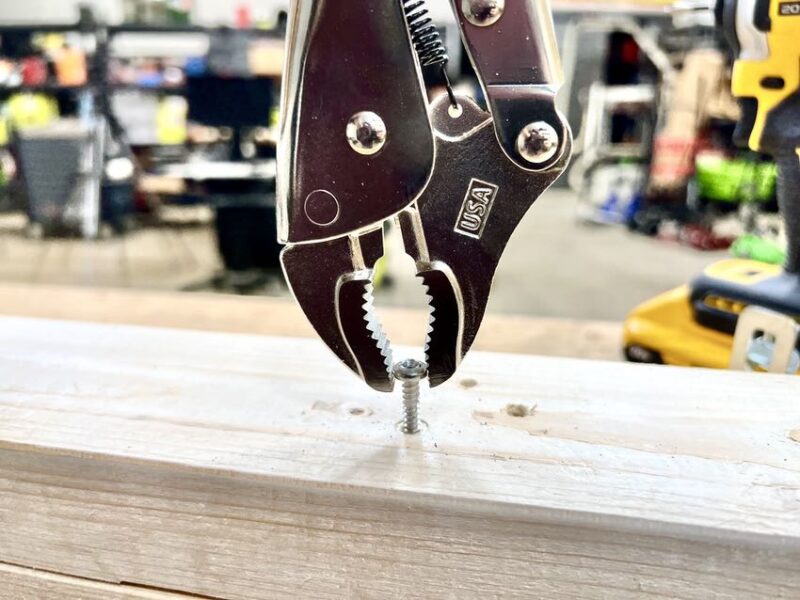
Use a rubber band
With this trick, you can use any type of rubberband. If you have a wide one, lay it over the screw, then use your screwdriver to loosen it. If you have a thin rubberband, wrap it around the screwdriver’s tip. The rubber band will help fill the gaps in the rounded-out screw head, giving your screwdriver more gripping power. With large screws, use two layers of elastic band.
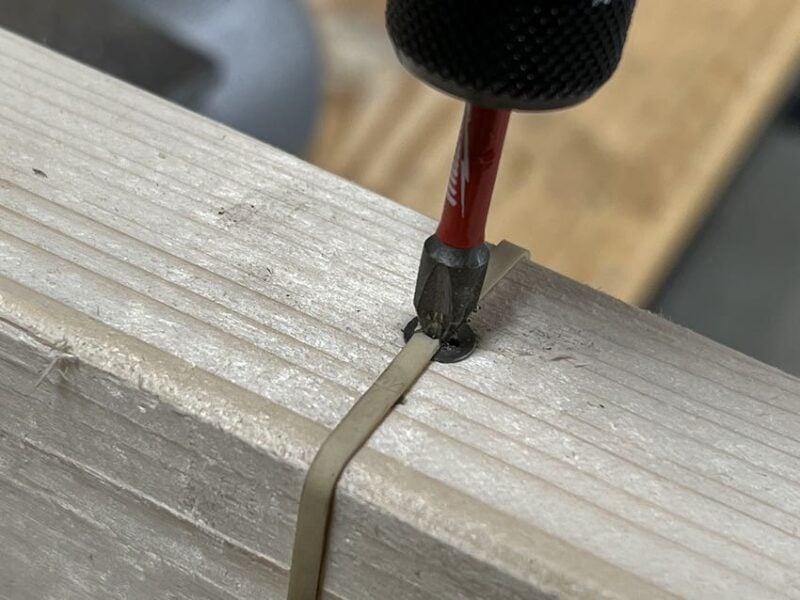
Use duct tape
The duct tape method for removing stripped screws is similar to rubber bands. Place a layer or two of duct tape over the screw head. It fills in the gaps so your screwdriver can get a better grip.
Steel wool
Placing steel wool over the head of the stripped screw can also work to fill in the gaps and help you remove a stripped screw. Of course, this trick doesn’t work as well if you find the screw completely stripped. However, the abrasiveness of the steel wool can give you just the right amount of friction on partially-stripped screws.
Use a hot glue gun
Most DIYers have a hot glue gun at home. First, fill the rounded-out hole in your screw with hot glue, then insert your screwdriver and let it dry in place for about 30 seconds before loosening the screw.
Use an abrasive
You can use either liquid or powdered abrasive to create more friction and help your screwdriver grip the remaining metal on the screw head. Powdered abrasives commonly help those looking to sharpen blades or otherwise polish, scrub, or remove materials using a sandblaster or similar tool.
Tools for Removing Stripped Screws
Sometimes, a stripped screw is a bigger challenge that requires a different approach with a more powerful tool. Stripped screw remover tools—specifically made for this job—work as the best choice by far. It only takes a minute to remove a stripped screw with the right tool.
Remember to use the right safety gear when using power tools to protect your eyes and fingers.
Using a Stripped Screw Remover or Extractor
Learning how to use a screw extractor tool can save you a lot of time and headaches. It’s basically a two-part process that starts with using a drill bit to bore out the damaged screw. Next, you drive the extractor bit in until it bites into the screw and slowly back it out until the screw is fully removed. The reverse threads on a bit extractor work in a way where they dig into the screw as you back it out.
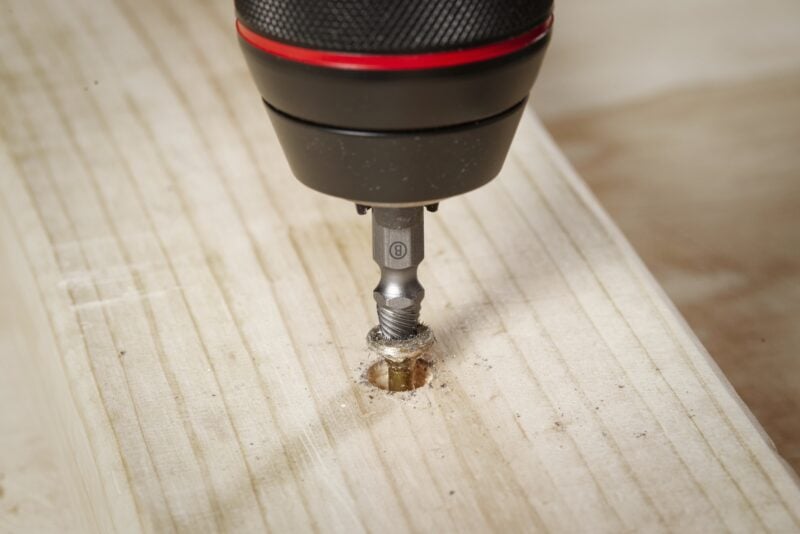
Selecting and Operating a Screw Extractor
Choosing the right type of screw extractor tool is just as important as knowing how to use one. The easiest ones to use are the double-ended boring and screw-extracting bits, but there are a few things to consider before selecting a screw extractor set.
- Type – there are a few different types available, such as spiral flutes, straight flutes, and double-ended extractors
- Materials – choose one made with hard metals like high-speed steel because they will be hard enough to remove all types of screws
- Gripping power – some types have more gripping power, and you can choose between the type that drills into the screw and the type that grabs the head of the screw
- Screw size – a lot of screw extractor tools come as a set with various sizes so that you can work on any size of stripped screw
- Easy to use – choose between hand-held extractor tools and bit sets that you can use in your power drill
When you choose a double-ended extractor bit, you never have to look for a compatible drill bit to go with it, and they usually come in sets with a handy carrying case.
Other Handy Tools for Stripped Screw Removal
There are a few other handy power tools and techniques that you can use to remove stripped screws.
Battery-powered or electric drill
With this trick, you use the chuck jaws on your electric or battery-powered drill to remove the stripped screw. If enough of the screw head is sticking out, you might be able to open the chuck on your electric drill, then hand-tighten it to close it around the head of the screw. Then, set your drill to reverse to unscrew the stripped screw.
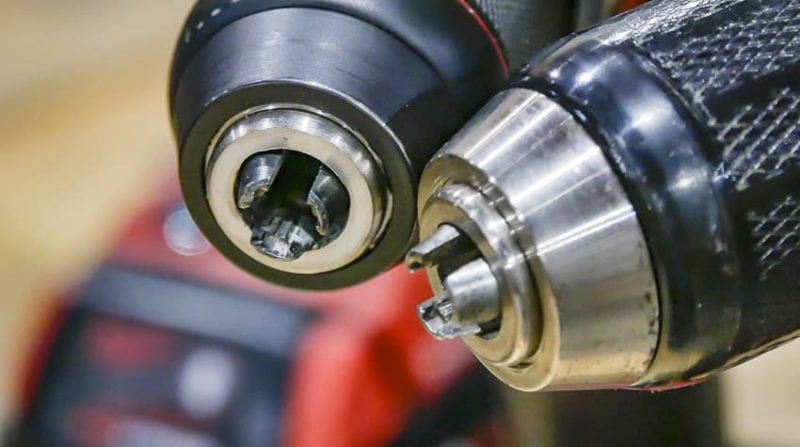
Rotary tool
As long as there is enough metal left, you can use the rotary feature on your Dremel tool to grind a new notch into the screw head. Then, you can carefully use a slotted screwdriver to unscrew it far enough to get a pair of locking pliers to finish the job.
Wood plug cutter
As a last resort, if your stripped screw is in a piece of wood, you can use a wood plug cutter to access the shank of the screw. Wood plug cutters are usually used for decorative effects, such as creating a hole filled with a plug to conceal a screw head.
Tips and Tricks for Removing Stripped Screws
If you’re still stuck, don’t despair. Here are some more tips and advice for removing stripped screws that could help.
Helpful Advice for Easier Screw Removal
Stripped screws can be frustrating, and you can easily make more mistakes when you’re frustrated. Instead, take a break from your project and pivot to another task to give yourself a chance to cool down. When you return to your stripped screw, you can take a calmer and more effective approach, especially if you have some new ideas that could work.
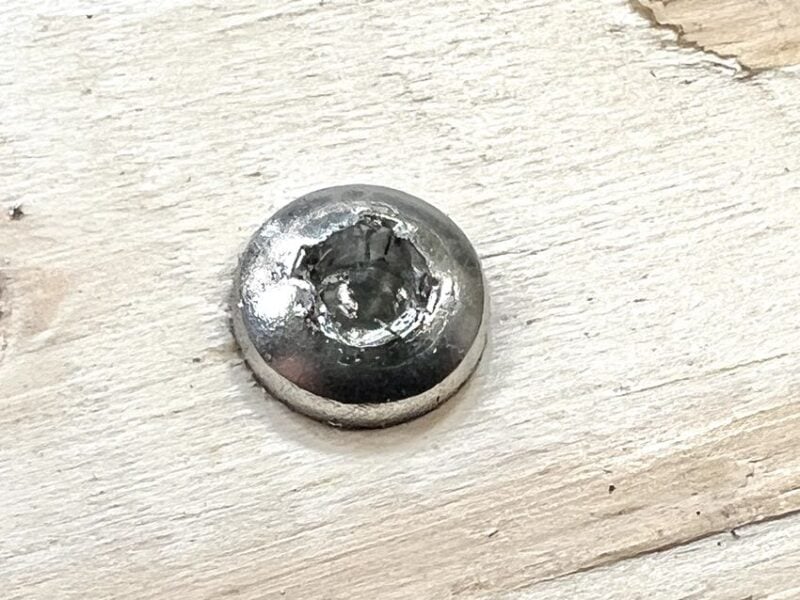
Lubrication, Tapping, and Other Handy Tips
Before giving up, there is another trick you can try. For slotted screws, place a flathead screwdriver on the head of the screw. After you give the screwdriver a few good taps with a hammer to make a new slot for the screw, turn the screwdriver to loosen the screw.
Anything you can do to make the screw come loose will help. Using a penetrant spray on old, rusty screws can help loosen them just enough to make these other tips and tricks more successful. Always wait at least 15 minutes after applying penetrating oils to allow them time to work.
Go slow when you’re working on removing stripped screws, especially when you’re using power tools. Once your screw is stripped and the metal is badly damaged, you must take it easy, no matter your chosen method. Also, avoid high-torque power drills and set your drill speed low before starting.
Remember that a stripped screw can happen to anyone, and it can almost always be removed with the right tools and techniques. The more experience you have with DIY projects, the better you’ll get at avoiding stripped screws and dealing with them when they happen.
Frequently Asked Questions (FAQs) About Removing a Stripped Screw
Can All Stripped Screws Be Removed?
Most stripped screws can be removed, and you can use many different methods and techniques to get them out. Of course, the best tool for the job is a screw extractor tool, but if you don’t have one, there are many other options.
How Can I Prevent Screws from Stripping?
Experienced DIYers know how to prevent screws from being stripped to avoid the inevitable hassle of removing stripped screws. Some of the most common reasons for stripped screws are using worn-out drill bits or using the wrong size or type of screwdriver. Paying attention when removing old screws is the best way to prevent stripped screws.
Are There Any Risks to Removing a Stripped Screw?
When removing a stripped screw, you risk damaging the material that the screw is in, and some methods are more risky than others. It’s best to take your time and go slow, especially when using power tools. You should wear safety goggles and work gloves when working with extractor bits, and don’t hesitate to take a break if you’re starting to get frustrated.
Can a Stripped Screw Damage My Tools?
Depending on the size of the screw and the quality of the metal, stripped screws can damage your screwdriver, particularly when you are applying a lot of pressure. Using the right tool for the job will help you avoid this, and if you plan on doing a lot of DIY projects, a screw extractor tool can save you a lot of headaches.
Is It Worth Investing in a Screw Extractor?
It’s not worth investing in a screw extractor set for some DIYers. However, if you are a serious DIYer and you have a lot of big projects, a screw extractor (try this one) can save you a lot of time and frustration, and you’ll never have to worry about stripped screws again.

